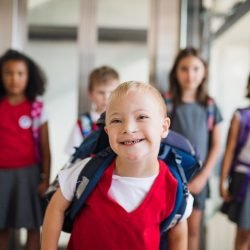Hybrid teaching will be a strategic resource in the resumption of face-to-face classes
At Camino School, activities at the school, with a small number of students, and remote teaching must serve both students who can attend the school environment and those who stay at home

With the return to school in the context of the new coronavirus pandemic, hybrid education, which combines classroom and online activities, will be fundamental for this resumption. This is because not all students will be able to return to school at the same time – due both to the rotation of students, which will be a necessary measure, and to the decision of some families to keep their children at home.
“We will need to create an alternative that works for everyone and hybrid education has this ability to serve those who will return to school and those who will stay at home, including the possibility of simultaneous transmission of some face-to-face classes”, says Marta Durante, pedagogical director of Camino Education.
She explains that the idea of resuming the face-to-face classes at Camino School is to receive a part of the students, who would be divided into two groups, class A, with students from the 2nd to the 5th year, and class B, with students from Early Childhood Education and 1st year. According to this proposal, which will still be discussed with the board of directors, educators and parents, while one group was studying in person (from Monday to Thursday) at school, the other group would remain at home, in remote learning (Distance Learning ), following the model that has been carried out since March with an excellent evaluation by parents, teachers and students. In the following week, this would be reversed, so that each class would have four days of face-to-face classes and would only return to school after 10 days at home. During this period at home, it would be possible to see if any student eventually showed symptoms of Covid-19 and to take the necessary measures to avoid contamination.
Even in this situation, Fridays would be reserved for the development of personal projects, for the subjects that students choose to study and investigate and to review content that they need to continue learning. According to the director, one of the ideas is that face-to-face teaching should privilege work with more complex content, such as English, Portuguese and mathematics, etc., as well as games and interactions between students. Remote education, on the other hand, would focus on investigations, the use of platforms and videos.
Hybrid education – possibility for the time of pandemic
Marta says that nothing replaces the teaching and learning process in person, but in the situation of the pandemic, adaptations and decisions must be made from a social and health point of view. “During quarantine, Distance Learning made it possible for students to continue carrying out their investigations, productions and continue learning. And hybrid teaching is an alternative for us to return safely, when this is feasible ”.
The director also recalls that CLOE, Camino Education's digital active learning platform, played a fundamental role in helping schools that adopted it in remote education during the pandemic. “During this period, several educational institutions were also able to get to know and try the tool for free. And it is equally strategic for hybrid teaching, in the resumption of semi-presential classes. ”













